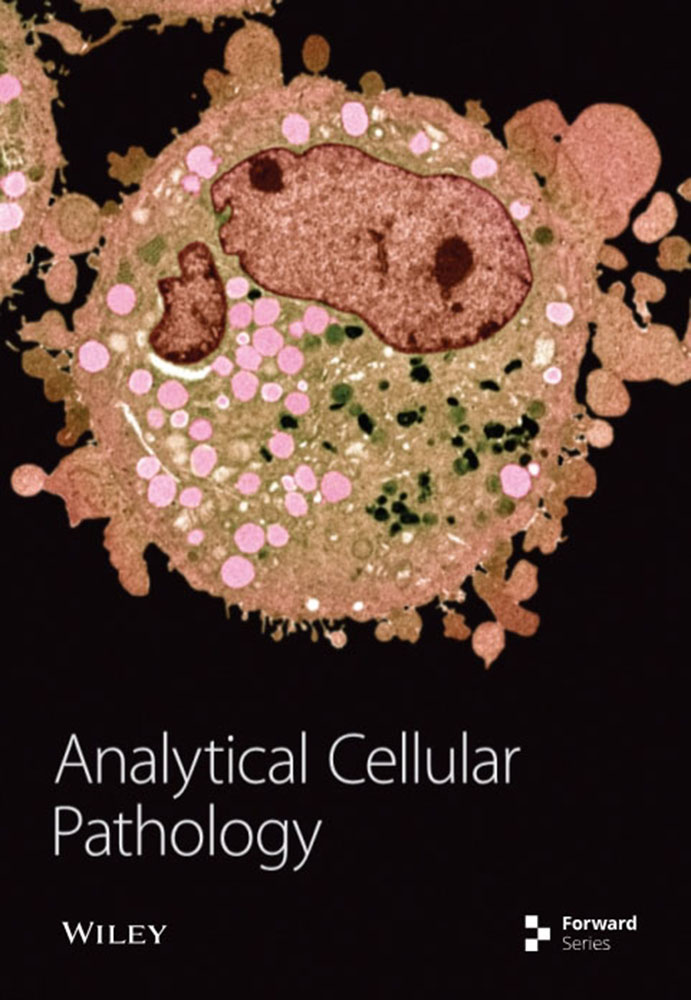DNM3OS 通过提供 miR-214-5p 和减少 E2F2 的表达,促进与非梗阻性无精子症相关的精原细胞的凋亡和衰老
IF 2.7
4区 医学
Q3 CELL BIOLOGY
引用次数: 0
摘要
背景。非梗阻性无精子症(NOA)是一种以睾丸组织生精功能障碍为特征的复杂疾病。长非编码 RNA(lncRNA)在 NOA 发病机制中的作用尚未得到广泛研究。研究方法对NOA患者的睾丸活检组织样本进行微阵列检测,以确定差异表达的lncRNA和信使RNA(mRNA)转录本,并通过定量实时聚合酶链反应验证结果。使用阿霉素(ADR)治疗小鼠衍生的GC-1精原细胞(spg),在体外研究了所选lncRNA的生物学功能。通过生物信息学分析预测了lncRNAs的靶microRNAs(miRNAs)和miRNAs的靶mRNAs。利用GC-1 spg细胞进行了CCK-8测定、EdU掺入测定、细胞凋亡检测和衰老相关β-半乳糖苷酶(SA-β-Gal)染色等功能研究。结果显示与对照组相比,NOA患者的睾丸组织中共有2 652个lncRNA和2 625个mRNA表达不同。Dynamin 3反链(DNM3OS)是pe-miR-214-5p的提供者,它能正向调节miR-214-5p在GC-1 spg细胞中的表达。E2因子(E2F)家族转录因子2(E2F2)最初被预测为miR-214-5p的下游基因,随后被证实为miR-214-5p的下游基因。在经 ADR 处理的 GC-1 spg 细胞中敲除 DNM3OS 后,E2F2 表达上调。此外,敲除 DNM3OS 或 miR-214-5p 能显著缓解 ADR 诱导的小鼠精原细胞 GC-1 spg 细胞活性和增殖的下降以及凋亡和衰老的增加。结论研究发现,DNM3OS能通过提供miR-214-5p和降低E2F2的表达来调节精原细胞的凋亡和衰老,这表明它是基因治疗男性不育症的一个新靶点。本文章由计算机程序翻译,如有差异,请以英文原文为准。
DNM3OS Enhances the Apoptosis and Senescence of Spermatogonia Associated with Nonobstructive Azoospermia by Providing miR-214-5p and Decreasing E2F2 Expression
Background. Nonobstructive azoospermia (NOA) is a complex disease characterized by the spermatogenic dysfunction of testicular tissues. The roles played by long noncoding RNAs (lncRNAs) in NOA pathogenesis have not been extensively studied. Methods. Microarray assays were performed on samples of testicular biopsy tissue obtained from patients with NOA for the purpose of identifying differentially expressed lncRNAs and messenger RNA (mRNA) transcripts, and the results were verified by quantitative real-time polymerase chain reaction. Mouse-derived GC-1 spermatogonia (spg) cells undergoing treatment with Adriamycin (ADR) were used to investigate the biological functions of the selected lncRNAs in vitro. The target microRNAs (miRNAs) of lncRNAs and the target mRNAs of miRNAs were predicted by a bioinformatics analysis. Functional studies performed using the CCK-8 assay, EdU incorporation assay, apoptosis detection, and senescence-associated β-galactosidase (SA-β-Gal) staining were conducted using GC-1 spg cells. Results. Totals of 2,652 lncRNAs and 2,625 mRNAs were found to be differentially expressed in the testicular tissue of NOA patients when compared with patients in a control group. Dynamin 3 opposite strand (DNM3OS) was a provider of pe-miR-214-5p that positively regulates miR-214-5p expression in GC-1 spg cells. The E2 factor (E2F) family of transcription factor 2 (E2F2) was initially predicted and subsequently verified to be a downstream gene of miR-214-5p. E2F2 expression was upregulated after DNM3OS knockdown in ADR-treated GC-1 spg cells. Moreover, knockdown of either DNM3OS or miR-214-5p significantly alleviated ADR-induced decreases in cellular activity and proliferation, as well as increases in apoptosis and senescence of mouse spermatogonial GC-1 spg cells. Conclusions. DNM3OS was found to regulate the apoptosis and senescence of spermatogonia by providing miR-214-5p and decreasing E2F2 expression, suggesting it as a novel target for gene therapy of male infertility.
求助全文
通过发布文献求助,成功后即可免费获取论文全文。
去求助
来源期刊

Analytical Cellular Pathology
ONCOLOGY-CELL BIOLOGY
CiteScore
4.90
自引率
3.10%
发文量
70
审稿时长
16 weeks
期刊介绍:
Analytical Cellular Pathology is a peer-reviewed, Open Access journal that provides a forum for scientists, medical practitioners and pathologists working in the area of cellular pathology. The journal publishes original research articles, review articles, and clinical studies related to cytology, carcinogenesis, cell receptors, biomarkers, diagnostic pathology, immunopathology, and hematology.
 求助内容:
求助内容: 应助结果提醒方式:
应助结果提醒方式:


